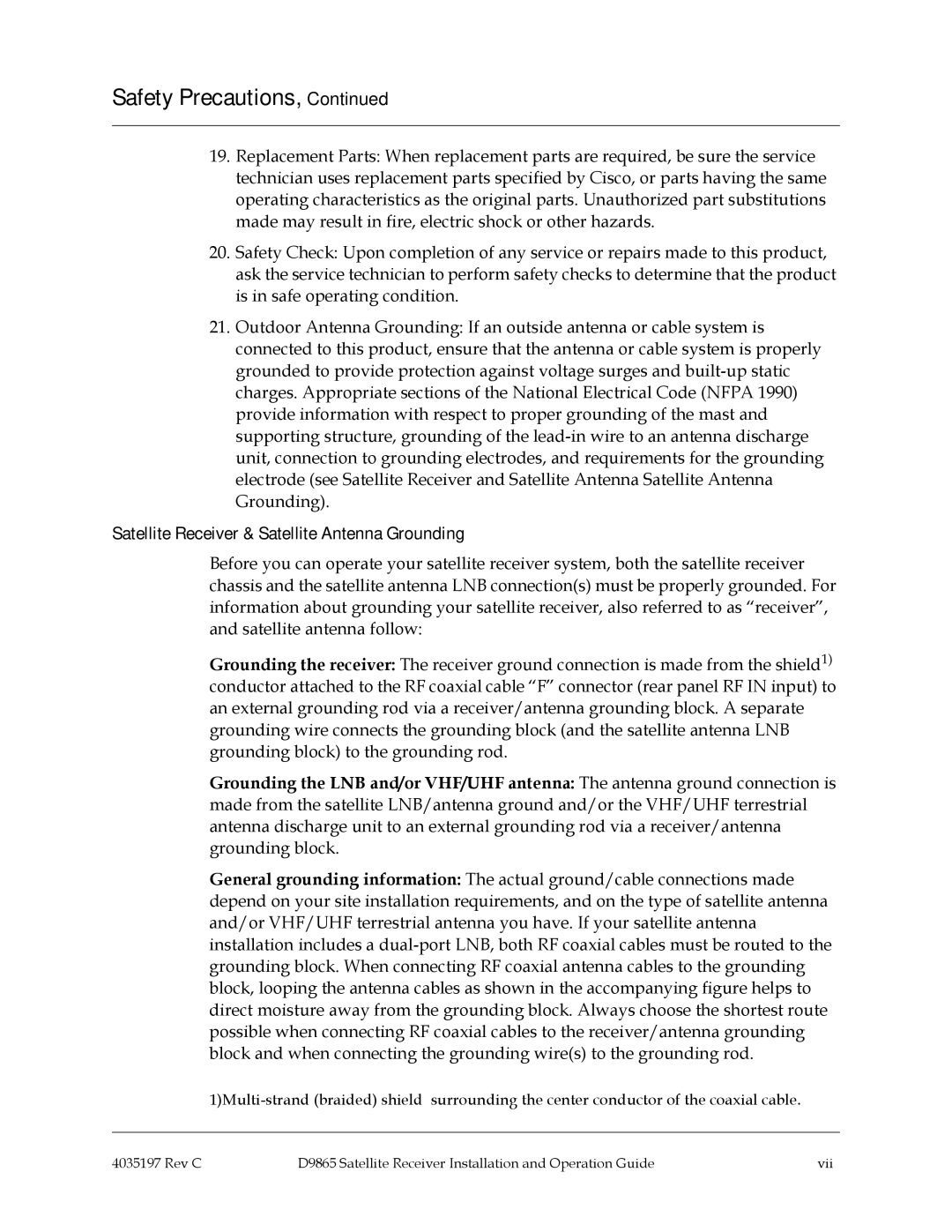
Safety Precautions, Continued
19.Replacement Parts: When replacement parts are required, be sure the service technician uses replacement parts specified by Cisco, or parts having the same operating characteristics as the original parts. Unauthorized part substitutions made may result in fire, electric shock or other hazards.
20.Safety Check: Upon completion of any service or repairs made to this product, ask the service technician to perform safety checks to determine that the product is in safe operating condition.
21.Outdoor Antenna Grounding: If an outside antenna or cable system is connected to this product, ensure that the antenna or cable system is properly grounded to provide protection against voltage surges and
Satellite Receiver & Satellite Antenna Grounding
Before you can operate your satellite receiver system, both the satellite receiver chassis and the satellite antenna LNB connection(s) must be properly grounded. For information about grounding your satellite receiver, also referred to as “receiver”, and satellite antenna follow:
Grounding the receiver: The receiver ground connection is made from the shield1) conductor attached to the RF coaxial cable “F” connector (rear panel RF IN input) to an external grounding rod via a receiver/antenna grounding block. A separate grounding wire connects the grounding block (and the satellite antenna LNB grounding block) to the grounding rod.
Grounding the LNB and/or VHF/UHF antenna: The antenna ground connection is made from the satellite LNB/antenna ground and/or the VHF/UHF terrestrial antenna discharge unit to an external grounding rod via a receiver/antenna grounding block.
General grounding information: The actual ground/cable connections made depend on your site installation requirements, and on the type of satellite antenna and/or VHF/UHF terrestrial antenna you have. If your satellite antenna installation includes a
4035197 Rev C | D9865 Satellite Receiver Installation and Operation Guide | vii |
